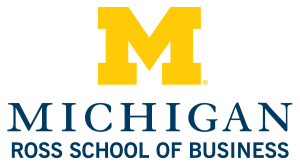This case is a follow-up to the PT Kizone A case. In the case, U-M President Mary Sue Coleman adopts three of the President’s Advisory Committee on Labor Standards and Human Rights’ recommendations and writes a letter to adidas requesting that the company come into compliance. Still, students at U-M and other universities are requesting that their institutions end their contracts with adidas over the PT Kizone factory labor rights violations. Adidas responds to Coleman’s letter noting actions it has taken regarding the issue, including providing food vouchers, assisting workers with job placement, and working with regulatory agencies to prevent foreign employers from evading their legal obligations to workers. Still, it does not indicate whether it will provide workers with the severance they are owed.
PT Kizone: Adidas Battles Allegations of Shirking Responsibility to Workers (B)
by: Ravi Anupindi
Core Disciplines: Base of the Pyramid, International Business, Leadership/Organizational Behavior, Operations Management/Supply Chain, Strategy & Management
Available Documents
Click on any button below to view the available document.
Make sure you are registered and/or logged in to our site to view product documents. Once registered & approved, faculty, staff, & course aggregators will have access to full inspection copies and teaching notes for any of our materials.
$3.95
If you need to make copies, you MUST purchase the corresponding number of permissions, and you must own a single copy of the product.
Electronic Downloads are available immediately after purchase. "Quantity" reflects the number of copies you intend to use. Unauthorized distribution of these files is prohibited pursuant to term of use of this website.
Teaching Note
This product does not have a teaching note.
Description
Teaching Objectives
After reading and discussing the material, students should:
- Determine if licensees are financially responsible for the actions of suppliers upstream.
- Analyze if claims should be apportioned across licensees where multiple licensees use the same supplier.
- Examine the responsibility of a university as a buyer.
- Describe which actions universities can take within the supply chain to ensure treatment is aligned with their workplace code of conduct.
- Indicate if there are any other mechanisms to ensure that workers are protected in the extended supply chain.

